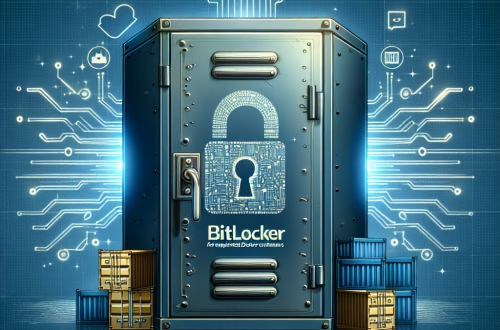BitLocker Recovery Without Microsoft Account: Technical Guide
Recovering a BitLocker key without a Microsoft account refers to methods for accessing encrypted drives when the recovery key was not (or cannot be) retrieved from a Microsoft cloud account. This is critical for enterprise environments, compliance scenarios, or users who disabled cloud backup to maintain full control of recovery keys—ensuring business continuity and data access during hardware failures, configuration changes, or authentication issues.
What Is BitLocker Recovery Without Microsoft Account?
BitLocker Drive Encryption is a full-volume encryption feature in Windows that uses AES-128/256 encryption. Standard setups back up recovery keys to Microsoft accounts, but organizations often mandate alternate key storage via Active Directory, Group Policy, or physical media. Recovery without a Microsoft account involves extracting keys from these alternative storage points, bypassing cloud dependencies. This is mandatory in air-gapped networks or regulatory regimes requiring offline key management.
How It Works
BitLocker recovery relies on cryptographic secrets stored in one of three ways when Microsoft account backup is disabled:
- Active Directory Domain Services (AD DS): Keys are backed up to AD via Group Policy (
Computer Configuration > Policies > Administrative Templates > Windows Components > BitLocker Drive Encryption). Domain admins retrieve them using PowerShell (Get-ADObject) or the BitLocker Recovery Password Viewer. - USB/Filesystem: Keys are saved to removable media or network paths during BitLocker setup (
manage-bde -protectors -add). - Printed Recovery Key: A 48-digit alphanumeric password is generated and stored physically.
At boot, BitLocker authenticates via TPM (if enabled), PIN, or USB key. If these fail (e.g., due to UEFI/BIOS changes), the recovery key is required. Without a Microsoft account, decryption demands one of the locally stored keys mentioned above.
Common Issues and Fixes
Issue 1: TPM Validation or PCR Changes
Description: TPMs measure Platform Configuration Registers (PCRs) during boot. Changes to firmware, boot order, or critical drivers trigger recovery mode.
Fix: Revert hardware/software changes to match PCR states or retrieve the recovery key from AD/backup. Clear the TPM if necessary (via tpm.msc or UEFI).
Issue 2: Missing or Lost Recovery Key
Description: Physical copies or filesystem-stored keys are misplaced.
Fix: Search system metadata (e.g., text files, AD backups). In enterprise environments, use Get-BitLockerVolume | FL MountPoint,KeyProtector on IT-managed backups.
Issue 3: Group Policy Misconfiguration
Description: AD backup fails due to incorrect GPO settings.
Fix: Audit Group Policies (GPO) for BitLocker key backup settings. Ensure domain controllers can store keys via kbakeyage.exe or manual script updates.
Best Practices
- Delegate BitLocker key backup to AD DS in enterprise environments, enforcing RBAC for access.
- Store physical/USB keys in secure offline locations (e.g., safes, encrypted USB drives).
- Disable Microsoft account backups via Group Policy (
Choose how BitLocker-protected drives can be recovered > Omit recovery options...). - Test recovery workflows annually to validate key accessibility.
- Use TPM + PIN multi-factor authentication to reduce false recovery triggers.
Conclusion
Recovering BitLocker keys without Microsoft account reliance ensures compliance and continuity in environments requiring full offline control. Success hinges on correctly configuring Active Directory, secure local/offline storage, and rigorous policy enforcement. Failing to implement these methods risks permanent data loss during critical recovery scenarios.
People Also Ask About
Can I recover a BitLocker drive without any key?
No—without the 48-digit recovery key or original credentials, data is cryptographically inaccessible.
Does BitLocker require TPM?
No, but TPM-less setups need USB startup keys or passwords, enforced via Group Policy.
How do I verify if my key is stored in Active Directory?
Run Get-BitLockerVolume | Select-Object MountPoint,KeyProtector and check for ADAccountOrGroupProtector entries.
Can I extract a recovery key from a locked Windows installation?
Yes, via WinPE boot media using PowerShell or manage-bde -protectors.
Is BitLocker insecure without a Microsoft account?
No—local key storage is equally secure if managed properly (e.g., air-gapped backups).
Other Resources
Suggested Protections
- Enforce AD-based key backup via Group Policy.
- Store physical keys in tamper-evident containers.
- Monitor TPM/PCR changes with endpoint management tools.
- Disable USB booting to reduce attack surface.
- Use hardware-secured TPM 2.0 modules.
Expert Opinion
“Offline key management balances security and availability but demands meticulous governance. As ransomware targets encrypted systems, isolating recovery keys from networks becomes a strategic layer of defense—though organizations must rigorously audit access controls to prevent insider threats.”
Related Key Terms
- Trusted Platform Module (TPM)
- Active Directory Domain Services (AD DS)
- Platform Configuration Register (PCR)
- Group Policy Object (GPO)
- Recovery Password




